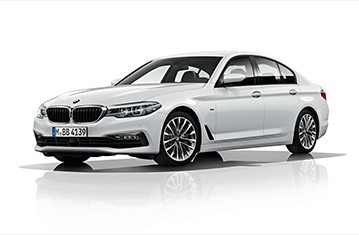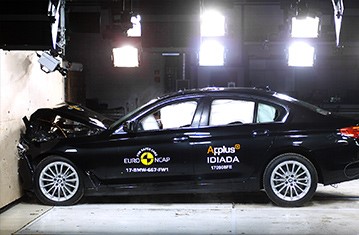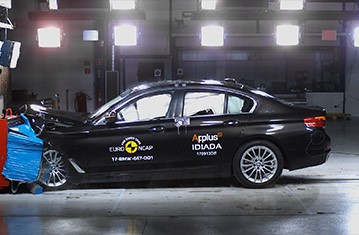- With standard equipment
- With safety pack
Find more information in the General Comments section of the assessment
Find more information in the Rating Validity tab of the assessment
- See More
- See More
- See More
- See More
- Good
- Adequate
- Marginal
- Weak
- Poor
 Passenger
Passenger
 Driver
Driver
 Rear Passenger
Rear Passenger
 Driver
Driver
 Car
Car
 Pole
Pole
 Rear Seat
Rear Seat
 Front Seat
Front Seat
- Good
- Adequate
- Marginal
- Weak
- Poor


Passenger
outboard
center
Fitted to the vehicle as standard
Not fitted to the test vehicle but available as option
Not Available
-
i-Size CRS
-
ISOFIX CRS
-
Universal Belted CRS
Easy
Difficult
Safety critical
Not allowed
| Seat Position | ||||
|---|---|---|---|---|
| Front | 2nd row | |||
| Passenger | Left | center | Right | |
| Maxi Cosi 2way Pearl & 2wayFix (rearward) (iSize) | ||||
| Maxi Cosi 2way Pearl & 2wayFix (forward) (iSize) | ||||
| BeSafe iZi Kid X2 i-Size (iSize) | ||||
| Maxi Cosi Cabriofix & FamilyFix (ISOFIX) | ||||
| BeSafe iZi Kid X4 ISOfix (ISOFIX) | ||||
| Britax Römer Duo Plus (ISOFIX) | ||||
| Britax Römer KidFix XP (ISOFIX) | ||||
| Maxi Cosi Cabriofix (Belt) | ||||
| Maxi Cosi Cabriofix & EasyBase2 (Belt) | ||||
| Britax Römer King II LS (Belt) | ||||
| Britax Römer KidFix XP (Belt) | ||||
Easy
Difficult
Safety critical
Not allowed
In the frontal offset test, protection of both the both dummies was good or adequate except for the chest of the 6 year dummy which was rated as marginal based on chest decelerations. The front passenger airbag can be disabled to allow a rearward-facing child restraint to be used in that seating position. Clear information is provided to the driver regarding the status of the airbag and the system was rewarded. All of the restraint types for which the 5 Series is designed could be properly installed and accommodated in the car.
- Good
- Adequate
- Marginal
- Weak
- Poor

Head Impact 22.7 Pts
Pelvis Impact 0.0 Pts
Leg Impact 6.0 Pts
| System Name | Person Warning with City Light Braking Function | ||
| Type | Auto-Brake | ||
| Operational From | 10 km/h | ||
| Additional Information | Defaults on for every journey; operates in low ambient light | ||
| PERFORMANCE | | |||
| Autobrake Function | |||
| Avoidance | Mitigation | ||
|
Running Adult crossing from Farside
|
Collision avoided up to 45 km/h | Impact mitigated up to 60 km/h | |
|
Walking Adult crossing from Nearside -25%
|
Collision avoided up to 45 km/h | Impact mitigated up to 60 km/h | |
|
Walking Adult crossing from Nearside -75%
|
Collision avoided up to 40 km/h | Impact mitigated up to 60 km/h | |
|
Running Child from behind parked vehicles
|
Collision avoided up to 35 km/h | Impact mitigated up to 50 km/h | |
The 5 Series has an 'active' bonnet. Sensors detect when a pedestrian has been struck and actuators lift the bonnet, providing greater clearance between its top surface and hard structures in the engine bay. BMW demonstrated that the system worked for a variety of pedestrian statures and over a range of speeds so tests were conducted with the bonnet in the raised position. Good or adequate protection was provided at all over the entire bonnet surface. The bumper also provided good protection and scored maximum points in tests of its protection of pedestrians' legs. However, protection of the pelvis area was poor at all test locations. The autonomous braking system is able to detect pedestrians as well other vehicles and performed well in Euro NCAP's tests of this functionality, with collisions being avoided or mitigated at most test speeds.
- Good
- Adequate
- Marginal
- Weak
- Poor
| System Name | Manual Speed Limiter |
| Speed Limit Information Function | N/A |
| Warning Function | Manually set |
| Speed Limitation Function | Manually set (accurate to 5km/h) |
| Applies To | All seats | ||
| Warning | Driver Seat | Front Passenger(s) | Rear Passenger(s) |
| Visual | |||
| Audible | |||
|
|||
| System Name | Front-End Collision Warning with Light Braking Function | |||
| Type | Forward Collision Warning with Auto-Brake | |||
| Operational From | 30 km/h | |||
| Additional Information | Default On | |||
| Performance | | ||||
| Autobrake Function Only | Driver reacts to warning | |||
| Operational Speed | 30-80 km/h | 30-80 km/h | ||
| Approaching a stationary car | See AEB City | Crash avoided up to 80km/h. | ||
| Approaching a slower moving car | Crash avoided up to 70km/h. | Crash avoided up to 80km/h. | ||
| Following a car at short distance | ||||
| Car in front brakes gently | Avoidance | Avoidance | ||
| Car in front brakes harshly | Mitigation | Mitigation | ||
| Following a car at long distance | ||||
| Car in front brakes gently | Avoidance | Avoidance | ||
| Car in front brakes harshly | Avoidance | Avoidance | ||
The standard-fit autonomous emergency braking system showed good performance in tests of its functionality at highway speeds. Collision was avoided in almost all circumstances and mitigated in others. A driver-set speed assistance system allows the driver to limit the maximum speed of the vehicle as appropriate, and a seatbelt reminder is provided for all seating positions.
- Specifications
- Safety Equipment
- Videos
- Rating Validity
Specifications
Tested Model BMW 520d, LHD
Body Type - 4 door saloon
Year Of Publication 2017
Kerb Weight 1560kg
VIN From Which Rating Applies - all 4 cylinder BMW 5 Series
Class Executive Car
Safety Equipment
Note: Other equipment may be available on the vehicle but was not considered in the test year.
Fitted to the vehicle as standard
Fitted to the vehicle as part of the safety pack
Not fitted to the test vehicle but available as option or as part of the safety pack
Not available
Not applicable
Videos
Rating Validity
Variants of Model Range
| Body Type | Engine & Transmission | Model Name/Code | Drivetrain | Rating Applies | |
|---|---|---|---|---|---|
| LHD | RHD | ||||
| 4 door saloon | 4 cylinder diesel | 518d, 520d* | 4x2 |
 |
 |
| 5 door estate | 4 cylinder diesel | 518d, 520d | 4x2 |
 |
 |
| 4 door saloon | 4 cylinder petrol | 520i | 4x2 |
 |
 |
| 5 door estate | 4 cylinder petrol | 520i | 4x2 |
 |
 |
* Tested variant



Find more information in the General Comments section of the assessment
 Share
Share











The passenger compartment of the 5 Series remained stable in the offset frontal impact. Dummy readings indicated good protection of the knees and femurs of the driver and passenger. BMW demonstrated that, for the passenger's side, a similar level of protection would be provided to occupants of different sizes and to those sat in different positions. On the driver's side, incorrect deployment of the knee airbag in the full-width test led to penalties for this body region in both frontal impact tests. In the full-width frontal test, the knee airbag did not deploy quickly enough to get between the right knee and the dashboard. Although dummy readings for both legs were good, protection of the knee/femur/pelvis region was penalised. BMW stated that the airbag deployment seen in Euro NCAP's test was anomalous and had not been observed in their development tests. Protection of the neck of the driver and the chest of the rear passenger was rated as marginal. In the side barrier test, maximum points were scored, with good protection of all critical body regions. Even in the more severe side pole test, protection was good, apart from the chest, protection of which was adequate. Tests on the front seats and head restraints demonstrated good protection against whiplash injuries in the event of a rear-end collision. A geometric assessment of the rear seats indicated good protection there too. The 5 Series has, as standard, and autonomous emergency braking system which operates at the low speeds, typical of city driving, at which many whiplash injuries are caused. The system scored maximum points in Euro NCAP's tests, with complete avoidance of collision at all test speeds.